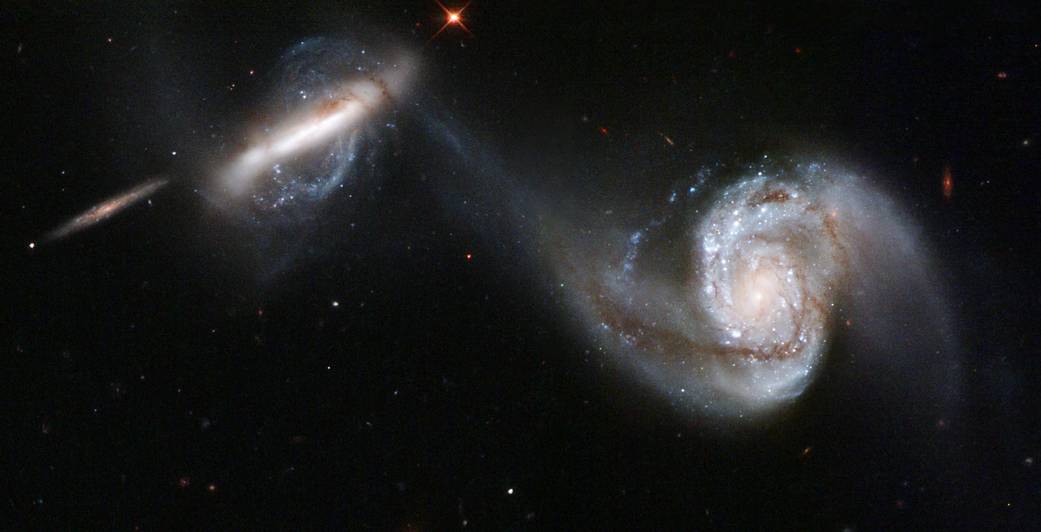
Two galaxies perform an intricate dance in this new Hubble Space Telescope image. The galaxies, containing a vast number of stars, swing past each other in a graceful performance choreographed by gravity. The pair, known collectively as Arp 87, is one of hundreds of interacting and merging galaxies known in our nearby universe. Arp 87 was originally cataloged by astronomer Halton Arp in the mid 1960s.
The two main players comprising Arp 87 are NGC 3808 on the right (the larger of the two galaxies) and its companion NGC 3808A on the left. As seen in other mergers similar to Arp 87, the corkscrew shape of the tidal material or bridge of shared matter between the two galaxies suggests that some stars and gas drawn from the larger galaxy have been caught in the gravitational pull of the smaller one. The shapes of both galaxies have been distorted by their gravitational interaction with one another.
Interacting galaxies often exhibit high rates of star formation. Some merging galaxies have the highest levels of star formation we can find anywhere in the nearby universe.
A major aspect of this excess star formation could be properly revealed only when Hubble turned its imaging capabilities toward colliding galaxies. Among the observatory’s first discoveries was that galaxies with very active star formation contain large numbers of super star clusters – clusters more compact and richer in young stars than astronomers were accustomed to seeing in our galactic neighborhood.
Arp 87 is in the constellation Leo, the Lion, approximately 300 million light-years away from Earth. These observations were taken in February 2007 with the Wide Field Planetary Camera 2. Light from isolated blue, green, red, and infrared ranges was composited together to form this color image.Image Credit: NASA, ESA, and the Hubble Heritage Team (STScI/AURA)

























